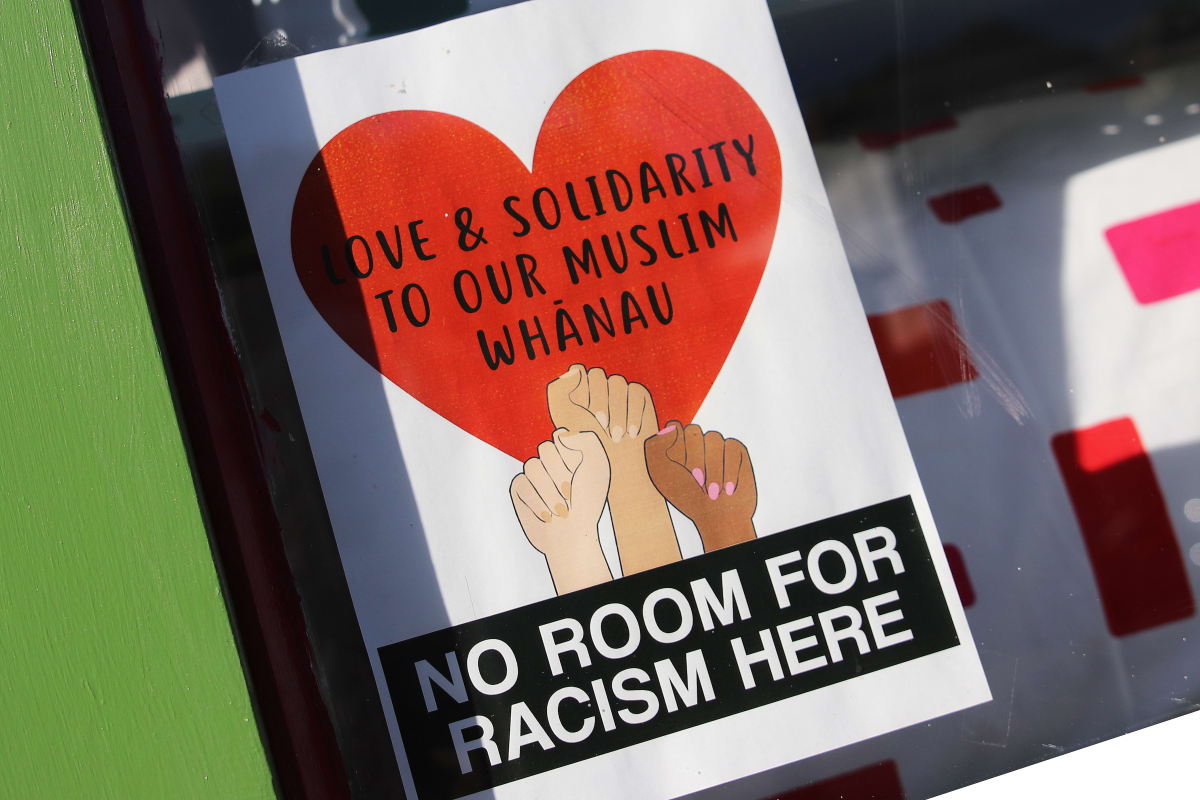Govt research: NZ importing right-wing extremist content
Government
For the first time the government has undertaken monitoring of online extremist content in New Zealand. Internal Affairs’ director of digital safety says it’s time for Kiwis to let go of their naivety.
New monitoring and analysis of online extremist content shows New Zealand is not immune to the same ideologies and conspiracy theories tearing communities apart across the globe.
For the first time, the government has carried out monitoring and analysis of the online extremist content that New Zealanders consume and share.
And Department of Internal Affairs director of digital safety Jared Mullen says the research shows New Zealand is facing similar issues to countries like the United States.
“New Zealanders are not immune to consuming, creating and sharing online extremist content,” he told Newsroom.
For Jonathan Milne’s summer briefing on the sectors that don’t stop, sign up here for the 3 Things newsletter.

Mullen said this included the “full spectrum” of extremist content, from left-wing, through to Islamist extremism, through to extreme environmental groups, through to right-wing extremism and conspiracies.
“We see them all online, being consumed, created, and shared by New Zealanders.”
Following the terror attacks at two Christchurch mosques in March 2019, the existence of extremist online content is unlikely to be a surprise to many New Zealanders.
However, Mullen believes many New Zealanders continue to think the type of content that has ripped apart other countries, like the United States, is not an issue in New Zealand.
“A certain amount of naivety that New Zealanders might have about whether we have this problem at all, does need to disappear, because we do have it.”
However, the soon-to-be-completed research also shows Kiwis’ do not have a larger problem than other countries, when it comes to per capita consumption.
When asked which ideologies were most prevalent, or what trends were emerging, Mullen was hesitant to focus on any one group.
When pushed, he said 2020 had seen a lot of “imported” content.
“There’s been a lot of content flowing from conspiracy groups and right-wing theories.”
“I can only conclude that prior to March 15 New Zealand was perhaps a little naive about whether these things actually applied to it.”
New Zealand’s propensity to import global conspiracy theories and right-wing ideologies has been highlighted through a string of concrete online, and real-life, examples.
Newsroom’s Marc Daalder has reported extensively on individuals and groups, such as the workings of homegrown white supremacist group Action Zealandia, as well as NZDF soldiers with links to far-right groups, and former New Zealand Initiative editor Nathan Smith who ran a far-right blog.
There was also the massive pre-election rise and fall of Billy Te Kahika Jr, who hitched his wagon to ousted MP Jami-Lee Ross, and peddled conspiracy theories in the hope of converting his followers into voters, and ultimately a ticket to the halls of power.
Many of the theories and ideologies espoused by these individuals and groups are the same as those fuelling division and unrest in the United States.
A right-wing conspiracy theory that the 2020 US Presidential Election was subject to voter fraud and rigging was the impetus behind the unprecedented US Capitol riots.
Wild 5G conspiracies linked to Covid-19 – the same ones preached by Billy TK – have seen protests and cell tower burning across the globe.
But Mullen reiterated that he did not want this to diminish the potential risks posed by other extreme ideologies.
The Royal Commission of Inquiry into the Christchurch Terror Attack warned against the dangers of focusing on one threat, at the expense of others.
In the lead-up to the March 15 attack, intelligence agencies decided to focus their meagre resources on the threat of Islamist extremism, leading to what the commission said was “an inappropriate concentration of counter-terrorism resources”.
This came at the expense of monitoring and understanding of the growing threat posed by white nationalists and the far-right.
Mullen said it was crucial not to repeat that mistake, so Internal Affairs’ monitoring work was geared towards building an understanding of the full spectrum of the threat environment online.
The fact this type of work had not been carried out by government agencies prior to the mosque attack was “disappointing”, he said.
“I can only conclude that prior to March 15 New Zealand was perhaps a little naive about whether these things actually applied to it.”

The need for the public sector and the public to have a better understanding of threats posed by extremism, and knowledge of the expected intelligence response, was another key feature of the Royal Commission report.
“National security is not the remit of the intelligence and security and law enforcement agencies alone,” the commissioners said.
Public sector, communities, civil society, local government and the private sector all had a role to play in countering terrorism and extremism.
“To play that role, New Zealanders must be informed about the issues and what they can do to help.”
To help it better understand the online extremist environment in New Zealand, DIA has engaged the Institute of Strategic Dialogue and the Centre for Analysis of Social Media, both in the United Kingdom.
The organisations have a history of rigorous research and analysis of online and social media environments, and Mullen said he expected the work to be finalised in early 2021, with some of the findings to be made public.
The monitoring of extremist content is part of DIA’s extended work programme, which focuses on the detection and prevention of online harm and extremist content.
Since the March 2019 terror attack, DIA has been building its capacity and expertise in this area.
Its bolstered digital safety team has been supporting work in high-profile areas like the Christchurch Call, and in the development and deployment of New Zealand’s online crisis response protocols.
It is also working on legislative changes, and will be part of the implementation of some of the Royal Commission’s recommendations.
“I’ve found a great weapon against imported overseas extremist idiocy is the great Kiwi sense of humour.”
One of the core recommendations of the report was for the public sector to grow, nurture and support social cohesion.
“Fundamental to New Zealand’s future wellbeing and security is social cohesion,” the report said.
“While social cohesion in New Zealand is much higher than many other countries, there are fault lines.”
The commissioners said maintaining and enhancing social cohesion was a “vital task” for government.
Mullen said DIA had an important role in promoting that social cohesion, both through the Office of Ethnic Communities (soon to be a standalone ministry), and through preventing online extremism.
While building social cohesion might sound like a daunting, and intangible, goal, DIA had already found a good weapon when it came to raising awareness and understanding of online harm.
Now the former deputy chief censor said he hoped it could be employed in the battle against online extremism.
“I’ve found a great weapon against imported overseas extremist idiocy is the great Kiwi sense of humour,” he said.
“There seems to be nothing we can’t diffuse in New Zealand when we bring that sense of humour to bear.”
The campaign incorporated humour and Kiwiness, in a conscious effort to allude to New Zealanders’ shared values.
DIA’s Keep It Real Online campaign has gained global recognition for its offbeat approach to messages around porn and online bullying, now Mullen said he hoped the campaign could be extended to deal with some of the aspects that led people towards that path of extremist expression and thought, and potentially illegal activity.
* This article is the first in a two-part series about DIA’s work in detecting, preventing and countering online extremism.
*** This article has been archived for your research. The original version from Newsroom can be found here ***


